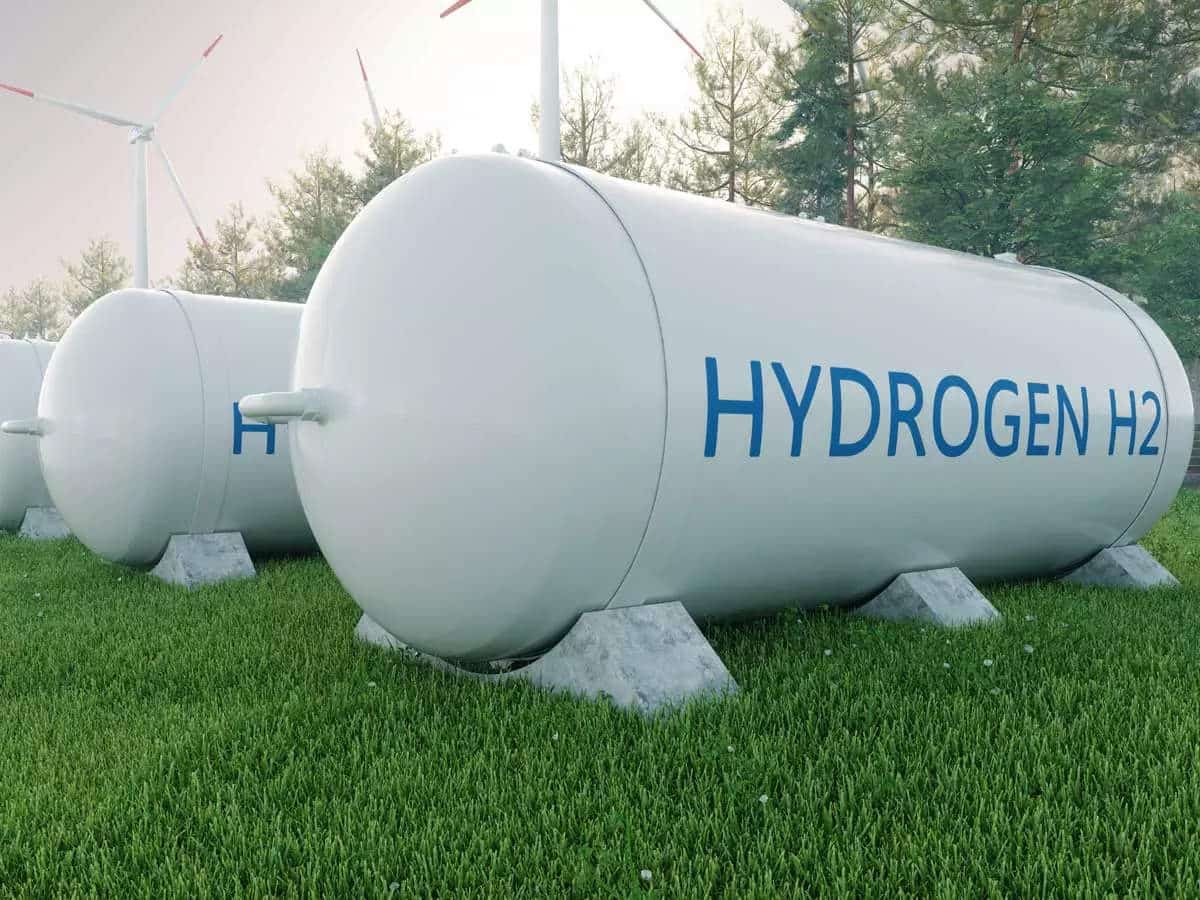What’s in today’s article?
- Why in News?
- What is Green Hydrogen?
- Applications of Green Hydrogen
- Highlights of the Green Hydrogen Standard for India
- India in Green Hydrogen Race
Why in News?
- The Ministry of New and Renewable Energy (MNRE) notified the green hydrogen standard for India, outlining the emission thresholds for production of hydrogen that can be classified as ‘green’.
- The notification specifies that a detailed methodology for measurement, reporting, monitoring, on-site verification and certification of green hydrogen and its derivatives will be specified by the MNRE.
What is Green Hydrogen?
- Green hydrogen is the name given to hydrogen gas that has been produced using renewable energy, such as wind or solar power, which create no GHG emissions.
- Comparing with grey and blue hydrogen:
- While hydrogen gas does not emit GHGs when burned, the electricity used to produce it may have been generated by fossil fuels. This is commonly known as ‘grey hydrogen’, which currently accounts for 95% of the total production.
- Hydrogen produced using electricity generated by burning fossil fuels, but paired with carbon capture and storage (CCS) technologies, which prevent GHGs from entering the atmosphere, is labelled ‘blue’.
Applications of Green Hydrogen:
- Globally, most of the hydrogen produced is used in the refining and industrial sectors – to make ammonia for the fertiliser industry and has applications in the steel industry.
- In developing countries such as India, which is investing in the National Hydrogen Mission, hydrogen could be used in transportation, power generation and industry.
- By the end of the decade, the International Energy Agency (IEA) anticipates that hydrogen will find a host of new applications, including powering grids and fuelling the building and transportation sectors.
Highlights of the Green Hydrogen Standard for India:
- Defines green hydrogen: It is defined as having a well-to-gate emission of not more than two kg carbon dioxide (CO2) equivalent per kg hydrogen (H2).
- India became one of the few countries to have a definition for green hydrogen.
- The well-to-gate emission includes: Water treatment, electrolysis, gas purification, drying and compression of hydrogen.
- The scope of the definition encompasses both electrolysis-based and biomass-based hydrogen production methods.
- Nodal authority for accreditation: The notification specifies that the Bureau of Energy Efficiency (BEE) under the Ministry of Power will be the nodal authority for accreditation of agencies.
- These agencies will take care of the monitoring, verification and certification for green hydrogen production projects.
India in Green Hydrogen Race:
- The government launched the National Green Hydrogen Mission (Jan, 2023) with an aim to produce 5 million metric tonne (MMT) green hydrogen per annum with an associated renewable energy capacity of about 125 giga watt (GW) by 2030.
- The mission has an outlay of Rs 19,744 crore up to 2029-30.
- The Strategic Interventions for Green Hydrogen Transition (SIGHT) programme is a major financial measure under the mission with an outlay of Rs 17,490 crore.
- The programme proposes two distinct financial incentive mechanisms to support domestic production of electrolysers and production of green hydrogen.
- These incentives are aimed at enabling rapid scale-up, technology development and cost reduction.
- The definition of green hydrogen brings a lot of clarity to the mission of making India a global green hydrogen hub.
Q1) What is the Bureau of Energy Efficiency (BEE)?
The Bureau of Energy Efficiency is an agency of the Government of India, under the Ministry of Power created in 2002 under the provisions of the Energy Conservation Act 2001. The agency’s function is to develop programs which will increase the conservation and efficient use of energy in India.
Q2) What is the International Energy Agency (IEA)?
The IEA is a Paris-based autonomous intergovernmental organisation, established in 1974, that provides policy recommendations, analysis and data on the entire global energy sector. The 31 member countries and 13 association countries of the IEA represent 75% of global energy demand.
Source: Govt unveils green hydrogen standards, sets emission thresholds for production | BS
Last updated on December, 2025
→ Check out the latest UPSC Syllabus 2026 here.
→ Join Vajiram & Ravi’s Interview Guidance Programme for expert help to crack your final UPSC stage.
→ UPSC Mains Result 2025 is now out.
→ UPSC Notification 2026 is scheduled to be released on January 14, 2026.
→ UPSC Calendar 2026 is released on 15th May, 2025.
→ The UPSC Vacancy 2025 were released 1129, out of which 979 were for UPSC CSE and remaining 150 are for UPSC IFoS.
→ UPSC Prelims 2026 will be conducted on 24th May, 2026 & UPSC Mains 2026 will be conducted on 21st August 2026.
→ The UPSC Selection Process is of 3 stages-Prelims, Mains and Interview.
→ UPSC Result 2024 is released with latest UPSC Marksheet 2024. Check Now!
→ UPSC Prelims Result 2025 is out now for the CSE held on 25 May 2025.
→ UPSC Toppers List 2024 is released now. Shakti Dubey is UPSC AIR 1 2024 Topper.
→ UPSC Prelims Question Paper 2025 and Unofficial Prelims Answer Key 2025 are available now.
→ UPSC Mains Question Paper 2025 is out for Essay, GS 1, 2, 3 & GS 4.
→ UPSC Mains Indian Language Question Paper 2025 is now out.
→ UPSC Mains Optional Question Paper 2025 is now out.
→ Also check Best IAS Coaching in Delhi

















